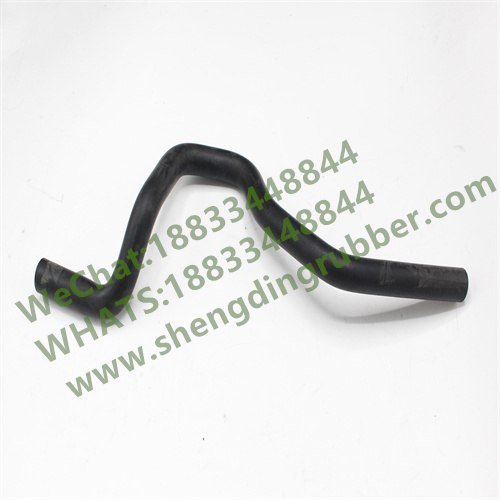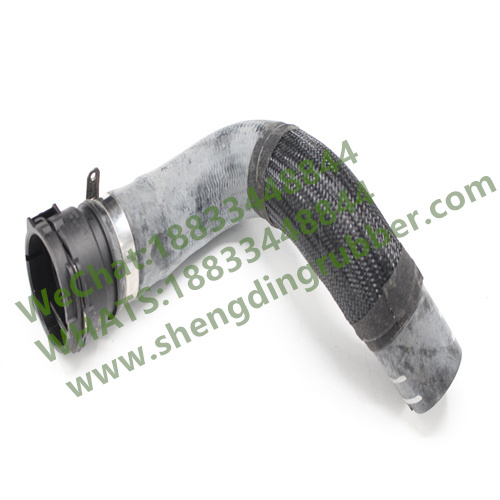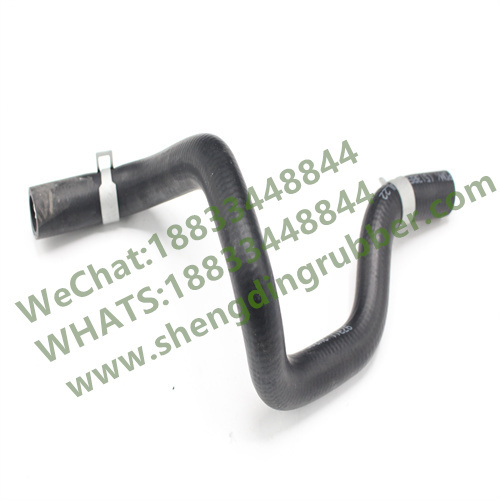Innovations in Rubber Hose Technology: Unveiling the Future of Automotive Excellence
Release Time:
Jul 11,2025
Innovations in Rubber Hose Technology: What You Need to Know Rubber hoses are integral components in the automotive industry, serving various purposes from fluid transfer to air circulation. With ongoing advancements in technology, the rubber hose sector is experiencing significant innovations that enhance durability, efficiency, and performance. This article delves into the latest trends, innovat
Innovations in Rubber Hose Technology: What You Need to Know
Rubber hoses are integral components in the automotive industry, serving various purposes from fluid transfer to air circulation. With ongoing advancements in technology, the rubber hose sector is experiencing significant innovations that enhance durability, efficiency, and performance. This article delves into the latest trends, innovations, and essential information relevant to rubber hose technology, particularly in automotive applications.
The Evolution of Rubber Hose Technology
Over the decades, rubber hose technology has developed significantly. Initially, these hoses were crafted from natural rubber, which, while effective, had limitations in terms of durability and resistance to environmental factors. The introduction of synthetic rubbers has revolutionized the industry, providing improved properties that cater to various applications.
From Natural Rubber to Synthetic Solutions
Natural rubber, derived from the sap of rubber trees, has been used for centuries. However, it is susceptible to degradation from heat, ozone, and chemicals. The emergence of synthetic rubbers like EPDM (ethylene propylene diene monomer) and NBR (nitrile butadiene rubber) has provided superior resistance to environmental factors, making them more suitable for automotive applications.
Environmental Resistance and Longevity
Modern rubber hoses are engineered to withstand extreme temperatures and harsh chemicals commonly found in automotive environments. This resistance not only extends the lifespan of the hoses but also reduces the risk of failure, ensuring safer and more reliable vehicle operation.
Key Innovations in Rubber Hose Technology
Innovations in rubber hose technology have paved the way for several advancements that enhance performance and safety. Let's explore some of the most impactful innovations that are reshaping the automotive industry.
1. Advanced Reinforcement Materials
One of the critical innovations in rubber hose technology is the use of advanced reinforcement materials. Traditional hoses often relied on textile or metal reinforcements, which could be heavy and less flexible. Today, manufacturers are utilizing composite materials that offer superior strength-to-weight ratios, enhancing both flexibility and durability.
Impact on Performance
The use of advanced reinforcement materials allows for increased pressure ratings without compromising the weight of the hose. This is particularly important in performance vehicles where weight reduction is crucial for speed and efficiency.
2. Enhanced Manufacturing Processes
The manufacturing processes for rubber hoses have also seen substantial advancements. Techniques such as extrusion and molding have become more sophisticated, allowing for tighter tolerances and improved consistency in product quality.
Precision Engineering for Improved Fit
Modern manufacturing techniques enable manufacturers to create hoses with precise dimensions. This precision ensures a better fit within the vehicle's systems, reducing leaks and improving overall efficiency.
3. Innovative Coatings and Treatments
Another significant innovation is the development of specialized coatings and treatments that enhance the performance of rubber hoses. These coatings can provide additional resistance to abrasions, chemicals, and UV exposure, further extending the lifespan of the hoses.
Protecting Against the Elements
Coatings that resist ozone and UV radiation are particularly beneficial for hoses exposed to outdoor elements. By minimizing degradation, these coatings contribute to the longevity and reliability of the hoses in various weather conditions.
4. Smart Hose Technologies
The integration of technology into rubber hoses is on the rise, with smart hose technologies becoming a reality. These hoses can incorporate sensors that monitor conditions such as pressure, temperature, and fluid type, providing real-time data that can be crucial for diagnostics and maintenance.
Predictive Maintenance for Enhanced Safety
By utilizing smart hose technologies, automotive manufacturers can implement predictive maintenance practices. This proactive approach allows for timely interventions before issues escalate, enhancing vehicle safety and reliability.
The Importance of Quality Standards
As innovations continue to reshape the rubber hose industry, adhering to quality standards remains paramount. Organizations such as SAE (Society of Automotive Engineers) and ISO (International Organization for Standardization) establish guidelines that rubber hose manufacturers must follow to ensure safety and performance.
Understanding Industry Certifications
Rubber hoses often bear certifications that indicate compliance with industry standards. These certifications provide assurance to consumers and manufacturers that the hoses meet stringent quality and safety requirements.
Choosing the Right Hose for Your Needs
When selecting rubber hoses for automotive applications, it is essential to consider the specific requirements of the vehicle and the intended application. Understanding the certifications and quality standards associated with each hose can help ensure optimal performance.
Challenges Facing Rubber Hose Manufacturers
Despite the many advancements in rubber hose technology, manufacturers still face challenges that can impact production and innovation.
1. Raw Material Availability
The availability of raw materials used in rubber production can fluctuate, affecting costs and production timelines. Synthetic rubbers, while more reliable than natural rubber, still rely on petrochemical resources that can be subject to market volatility.
Impact on Pricing
As raw material costs rise, manufacturers may need to adjust pricing strategies, which could impact the affordability of rubber hoses for consumers.
2. Environmental Concerns
As the automotive industry moves toward sustainability, rubber hose manufacturers face pressure to adopt eco-friendly practices. This includes minimizing waste during production and exploring biodegradable alternatives.
Transitioning to Sustainable Practices
To meet environmental demands, manufacturers are increasingly looking into sustainable materials and processes that reduce their overall carbon footprint.
Future Trends in Rubber Hose Technology
As we look ahead, several trends are emerging in the rubber hose industry that could shape its future.
1. Increased Focus on Sustainability
The automotive industry is witnessing a paradigm shift towards sustainability. Rubber hose manufacturers are expected to invest in eco-friendly materials and production methods that align with this trend.
Biodegradable and Recyclable Options
The development of biodegradable rubber hoses and recyclable materials is anticipated to gain traction. These innovations will not only meet consumer demands for sustainability but also comply with stricter regulations.
2. Integration of IoT Solutions
The Internet of Things (IoT) is transforming various industries, and rubber hose technology is no exception. The integration of IoT solutions could lead to smarter hoses that communicate performance metrics directly to vehicle management systems.
Enhanced Vehicle Intelligence
This integration will enable manufacturers to develop more intelligent vehicles that can monitor their health in real-time, leading to improved safety and efficiency.
Conclusion
Innovations in rubber hose technology are shaping the future of the automotive industry, delivering enhanced performance, safety, and sustainability. From advanced materials and manufacturing processes to smart technologies and eco-friendly practices, the evolution of rubber hoses is ongoing. Staying informed about these innovations is essential for automotive professionals, manufacturers, and enthusiasts alike. As the industry continues to advance, understanding these changes will ensure that we can adapt and thrive in an increasingly competitive market.
FAQs about Rubber Hose Technology Innovations
1. What are the main materials used in modern rubber hoses?
Modern rubber hoses are primarily made from synthetic materials like EPDM and NBR due to their superior resistance to heat, chemicals, and environmental factors.
2. How do smart hoses enhance vehicle performance?
Smart hoses equipped with sensors can monitor conditions like pressure and temperature, providing real-time data for diagnostics and maintenance, thus preventing failures.
3. What should I consider when choosing a rubber hose for my vehicle?
When selecting a rubber hose, consider the specific application, the required certifications, and the hose's resistance to environmental factors.
4. Are there sustainable options available for rubber hoses?
Yes, there is a growing trend toward biodegradable and recyclable rubber hoses as manufacturers respond to environmental concerns.
5. How do advancements in rubber hose technology impact vehicle safety?
Innovations like advanced materials, smart technologies, and improved manufacturing processes lead to more reliable hoses that enhance overall vehicle safety and performance.
Key words:
What Else Might You Learn?







